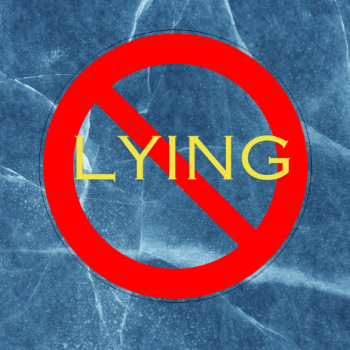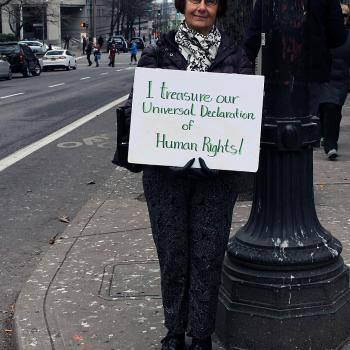Last night, I gave a lecture at the University of Hartford to students in a humanities seminar studying ideas of utopia and dystopia. I gave my usual talk about my story as told in my book, No Easy Choice, and included some reflections on how dystopian novels, particularly Lois Lowry’s The Giver, can illuminate the purposes and pitfalls of technological reproduction. The students asked some great questions and made important observations.
As I drove home, I kept thinking about one young woman’s response to my saying that my main goal is to promote better conversations around disability and reproductive technology, to educate people about how cultural assumptions about disability influence reproductive decisions in ways that people often don’t realize. She pointed out that “education” is a big, perhaps unattainable goal; we can’t possibly change the way everyone thinks about disability and what sort of child they hope to have. She’s right, of course. But there’s much we can do to influence cultural assumptions around disabilities in some key settings. I can think of three specific things we can do to influence the assumptions of a significant number of people—assumptions that will influence how those people approach childbearing, genetic and prenatal screening, and a potential or actual disability affecting their child.
We can push back against false media representation of disability, and offer different, more positive and multi-faceted portraits of what it means to live with a disability. When the media write that someone “suffers from” a particular disability, or is “confined to” a wheelchair, we can point out that their language is both offensive and inaccurate. People with disabilities don’t wake up in the morning focused on our suffering. People who use wheelchairs are more mobile in their chair then out of it; it’s not confinement. The media also tend to stick to one of two primary narratives about people with disabilities: the suffering person who deserves our pity, or the extraordinary person who overcomes every obstacle (which reinforces the notion that to bear life with a disability, you must be extraordinary, not a mere mortal). We can call journalists on the incomplete nature of these narratives, and push them to tell more real, nuanced, accurate stories. We can tell our own stories, without covering up the complexities and paradoxes that are part of our lives. For many people, the media are a primary source of information about what it’s like to live with a disability. No wonder prospective parents think they wouldn’t be able to handle parenting a child with a disability. According to many media accounts, life with a disability is either a giant pity party or requires special strengths that most people don’t think they have.
We can insist that clinicians become more transparent about ethical issues raised by their specialties, providing information, resources, and support for patients to explore those issues. Clinicians on the front lines of providing genetic and prenatal screening could do a better job of recognizing, and voicing to patients, the difficult ethical and emotional questions raised by today’s reproductive technologies. Fertility clinics, in introductory sessions where they educate prospective patients on IVF, PGD, and other processes, could include, at minimum, a “heads up” that patiens will confront some difficult questions—how far to go if the first-line assisted reproduction technology doesn’t work, whether to screen embryos for gender or genetic conditions in the IVF process, what to do with any embryos left over. Clinics could make genetic counselors and mental health professionals readily available to patients to talk about these issues when they come up. All staff, including ultrasound technicians, medical assistants, nurses, and doctors, could be required, as part of their training to work in maternal/fetal medicine and reproductive endocrinology, to do some reading and discussion of disability issues. For too many clinicians, the knee-jerk response is to assume that termination is the best option for parents facing an unexpected prenatal diagnosis, or that anyone with a genetic disorder in their family must obviously want to screen for that disorder. Education around the disability identity and rights movements could begin to counteract that bias.
We can ensure that students training for medical professions, including medical, nursing, and genetic counseling students, encounter people with disabilities outside of the clinical setting, in person and/or through their stories. One reason that some clinicians tend toward a pessimistic view of life with a disability is that, in their training, they tend to only see the sickest, most disabled people—those who are in need of hospital care. If the only child with Down syndrome that a doctor has ever met was in pain and intubated after surgery to repair a significant heart defect, that child will come to represent what Down syndrome means. Pain. Surgery. Weakness. But that’s not the only or typical story about life with Down syndrome. My friend Amy Julia Becker, other parents, and clinicians whom I converse with via an email list serve speak highly of programs that invite clinicians to interact with people with disabilities in their homes or other non-hospital settings. When visiting med students have had dinner with Amy Julia’s family, which includes a daughter with Down syndrome, they see that the family is pretty much just like any other family with young children. Happy. A little frazzled and chaotic. But not sad. Not suffering. This counterpoint to prevailing narratives of disability is vital for clinicians who end up being the first responders to parents getting a prenatal diagnosis as well as ongoing caregivers for children and adults with disabilities. Medical humanities and narrative medicine courses in medical school can also introduce clinicians to important counternarratives of disability, in which disability is not a tragedy, but a part of a rich, full life.
As I talked last night, I realized that my belief that we can influence cultural assumptions around disability, that we can help regular people—lots of them—think more critically about those assumptions, must sound a little ridiculous. A little over-optimistic. A little Pollyanna-ish. But I think of the conversation around race and racism in our country. Racism is alive and well, certainly. But many people today are at least aware that they hold inaccurate assumptions about race. People may still harbor racist notions, but more people realize that those notions are dangerous and wrong. That’s a huge difference from even 50 or 60 years ago, when assumptions about race were more likely to go unquestioned. I believe that, by continually challenging prevailing assumptions about disability and providing powerful counternarratives, we can educate people about their inaccurate assumptions about disability, even if we can’t completely eradicate those assumptions. At least not right away.















